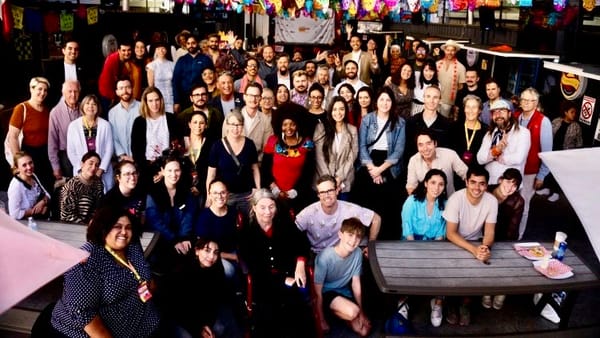Using Local Networks, Placemaking Campaigns, and Catalytic Projects as a Force for Community and Global Change

Imagine if the places where we live were walkable and shaped for, and from, our social lives, re-imagined to make it easy for us to gather, shop, have fun, eat together, and be around people different from us. With this mindset, we would fundamentally change our communities, and collectively have an impact on the health of our planet.
This is not a dream. This vision has actually been achieved in many cities around the world as placemaking has become a global movement. Still, although we are seeing huge growth in placemaking as a field, we are not at the level of investment that we think is both possible and, indeed, necessary for the future of our cities and planet.
The challenges of our time – climate change and resilience, health, equity and inclusion — are indeed global in scale. But the most effective and catalytic solutions can often be found on the local level. That's why we strive to support and expand placemaking as a catalytic investment in our future.
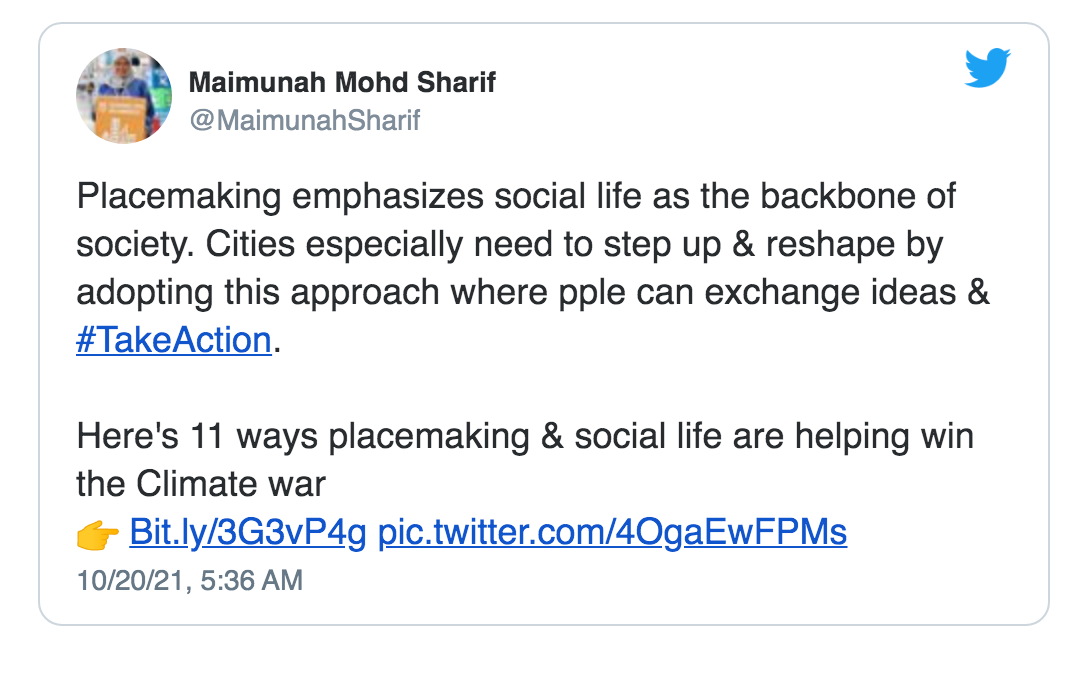
How we got here: 1970s to Today
1970-1975: “The Golden Age of Public Life Research”
- This era began with the foundation of William “Holly” Whyte, Jane Jacobs, Margaret Mead, Alan Jacobs, and others forming what we call, “The Golden Age of Public life Research.” This research on the social life of public spaces became our building blocks for our work and highlighted the crucial importance of public spaces and the ways that people use and benefit from them,
- In 1975, we founded Project for Public Spaces to apply the work of Holly Whyte in real communities, and get public spaces planned as if people mattered. We began a series of what have proven to be catalytic projects in NYC, including Bryant Park, Times Square, Rockefeller Center, and the Port Authority Bus Terminal, which had fallen into an era of urban dysfunction and decay.
1990s - 2000s: Placemaking is born
- In the 1990s, we transitioned from “public spaces” to “placemaking” as a major idea for creating stronger communities. We continued our catalytic work, but also provided tools for communities based on our 11 Principles for Creating Great Places, which featured long-lived advice like: “The community is the expert;” “You are creating a place, not just a design;” “You can’t do it alone;” and “If they say it can’t be done, it doesn’t always work out that way.”
- Because this approach was the opposite of widespread but narrowly focused planning, as defined by professional disciplines and siloed government agencies, we launched new programs, training workshops, an expanded website, and conferences. This allowed us to change the status quo and create holistic visions for transportation, parks, markets, and other types of public spaces.
- We continued to lead some of the most catalytic public space projects in the world, and tell the story of their transformation in the 2018 edition of How to Turn a Place Around. Projects included: Campus Martius, Detroit; Harvard’s Science Plaza; Market Square, Pittsburgh; Discovery Green, Houston; Flint Farmers Market, Flint, MI; and Perth Cultural Center, to name a few.
2013 - 2018: Placemaking Networks Emerge
- In 2013, we hosted the first meeting of the Placemaking Leadership Council in Detroit. The Council soon grew to include more than 1,500 members. With increasing global interest, Placemaking networks began to emerge in different regions around the world.
- In 2013 we partnered with UN-Habitat and the Axson Johnson Foundation in Stockholm to create the Future of Places, a successful effort to make public space and placemaking a global cause with recognition in the 2016 New Urban Agenda.
2018 - Today: The Placemaking Fund
- In 2018, we formed a new nonprofit(501c3) organization, the Placemaking Fund, and soon launched two programs:
- PlacemakingX is a global network of thought leaders, public space activists, regional network leaders, and professionals who together accelerate placemaking as a way to create healthy, inclusive, and beloved communities. Led by its own global advisory board of placemaking leaders, PlacemakingX seeks to lead global campaigns around the world. Currently, PlacemakingX is formed by 100+ leaders and 1,300+ advocates from 80+ countries around the world and has spawned 18+ regional placemaking networks.
- The Social Life Project’s mission is to incite a renaissance of community connections by highlighting what makes public spaces thrive. By telling the stories of communities that have done outstanding Placemaking work, along with campaigns like the 11 Transformative Agendas to Restore Social Life in Your Community, we can create fundamental change in cities and communities around the globe.
- All of this is leading Placemaking forward as a locally-led global effort. It demonstrates a meaningful step by the Placemaking Movement to link public space interventions with innovative and inclusive solutions to some of our biggest shared challenges.
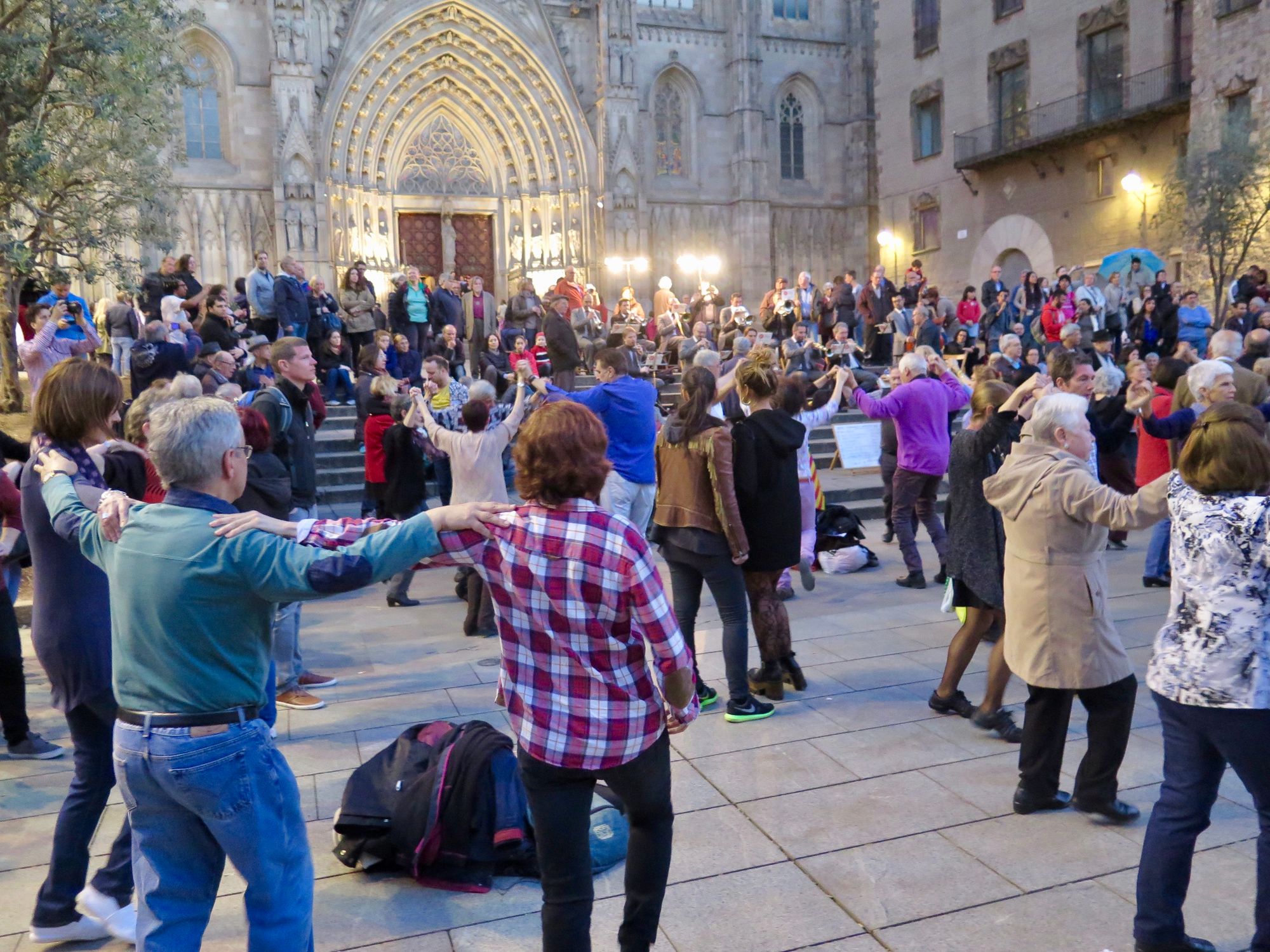
The Next Stage
With the above as the basic foundation, The Placemaking Fund and its two core programs are now poised to impact our ultimate goal of a healthy, sustainable, and resilient planet. The next logical stage in our evolution is to launch city-level or regional campaigns and catalytic projects framed by the 11 Transformative Agendas and strategically connected with other global networks and movements:
- As we emerge from the global pandemic, during which time public spaces have taken on new importance, we need to align our two programs with like-minded partners who are also looking to accelerate the adoption of Placemaking as a fundamental force in cities:
- The next stage of Placemaking X and its network is to launch, partner, and lead Placemaking Catalytic Campaigns & Catalytic Projects to accelerate the impact of the movement.
- The next stage of the Social Life Project is to foster, celebrate, and curate those efforts into broad global agendas, and to tell the stories of catalytic Placemaking projects to a broader audience.
- Programmatically and thematically, campaigns should support one or more of our Transformative Agendas to Restore Social Life in Communities:
11 Transformative Agendas

These transformative agendas can be a foundation for the future and a roadmap for communities seeking to launch placemaking campaigns:
- Bringing Back the Public Square
- Putting Markets at the Center of Neighborhood Social Life
- Starting with the Sidewalks to Create the Streets We Want
- Turning Buildings Inside-Out: Architecture of Place
- Supporting Multi-Use Community Hubs
- Capitalizing on the Appeal of Waterfronts
- Strengthening Assets that Express a City's Character
- Highlighting a Community's Identity by Creating Great Amenities
- Creating Social Life for All
- Having Fun
- Making it Happen: Forums that Spark the Imagination
Broader Impacts of Placemaking
We must leverage the multiple impacts of these catalytic projects and campaigns to become models for and advance progress on our most critical global challenges:
Lighter, Quicker, Cheaper
Placemaking can also greatly accelerate the impact of infrastructure that often takes years to plan and implement. Short-term, low-cost improvements can act as stepping stones to larger more substantial investments while achieving immediate results. These “Lighter, Quicker, Cheaper” interventions also enable experimentation with design changes before they are permanently constructed.
Placemaking at Both Scales: The Local and National/Global
- We need to leverage anticipated infrastructure investments, on both national and global scales, to meet the rapidly growing need for public spaces in the face of health, climate and economic challenges.
- At the same time, we need to address the pressing global challenges of climate change and resilience, public health, and equity and inclusion through local placemaking strategies.
Catalytic Placemaking projects can potentially include:
- Transformation of a single, major public space in a city;
- Multiple placemaking projects in a single city district;
- City/region-wide campaigns of connected placemaking initiatives; and
- Suburban and/or small-town versions of the above.
Our 5 Catalytic Campaigns
In line with this local X national/global approach and rooted in placemaking principles, the 5 catalytic campaigns we have developed focus on changing the fundamental components of the built environment - corners, sidewalks, streets, buildings, and squares - and in doing so triggering social, climate, and economic changes on every scale.
(1) Creating Social Life for All - Places Where People Thrive
Our first campaign has to do with social inclusion and the creation of public spaces that welcome people from all different backgrounds. We have explored the needs of people from different ages and genders, including kids, women, couples, and men – observing the various ways that individuals interact with and benefit from shared spaces and what elements make those spaces great.

(2) A Bench on Every Corner... Is More Than Just a Bench
We are long-time advocates of seating, especially of benches in public spaces. When done right, they add an irreplaceable element of comfort to public places and make them usable and enjoyable for longer periods of time. They provide a space for social encounters, encourage lingering, and send a message of welcome. But the most important impact of a bench is what happens to the surrounding neighborhood after it is introduced.
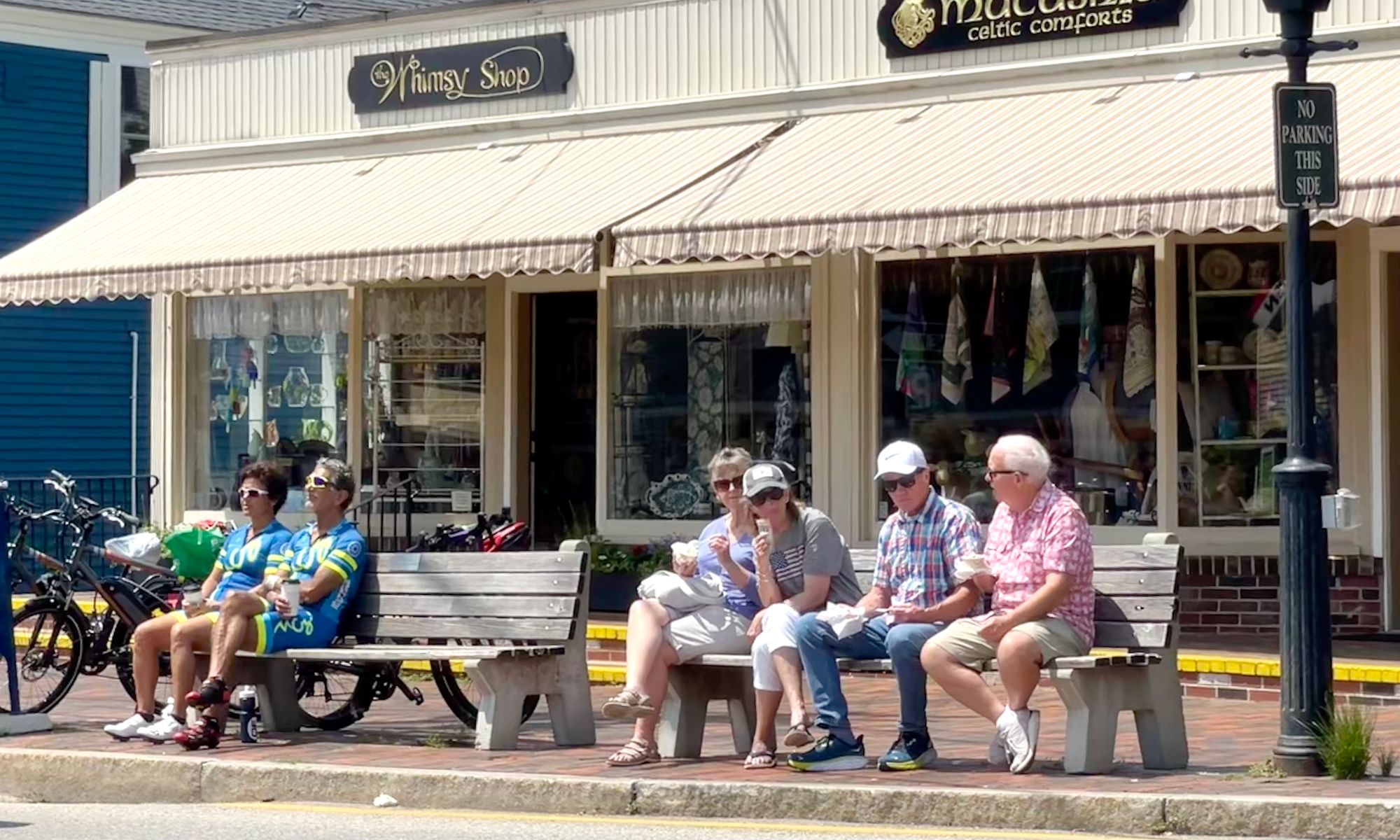
(3) Creating the Streets and Sidewalks We Love - Shifting Our Focus From Cars to People
Recently, we have become so disturbed by the lack of progress in regards to stopping an ever growing car culture, that we have turned our voices to making people understand the terrible impacts of Killer Intersections and the transformative power of sidewalks and corners on our communities. Shifting our focus from cars to connection turns everything upside down, changing our trajectory from one of destruction to one of happiness, health, and prosperity. Not only does this mean that our communities become more socially connected, but also that we reduce our greenhouse gas emissions from driving – leading to better health and climate outcomes.

(4) A "Porch" on Every Building - How Bringing the Inside Out Creates Vibrant Communities
When the private realm of homes and businesses is kept completely separate by walls from the public realm of sidewalks and squares, the street grows dull and people avoid spending time there. Social and commercial life withers. Opening up buildingsthrough "porches" brings our shared environment to life and invites people to explore it.

(5) Bringing Back the Heart of Communities - Squares and Markets
Having vibrant and active sidewalks is vital in and of itself, but our sidewalks should also lead us somewhere great. They should take us to destinations where we can do the things we love such as meet with friends, see beautiful sights, enjoy delicious foods, shop, explore and play. These activities take place in squares and markets, where the heart of our communities can be found.
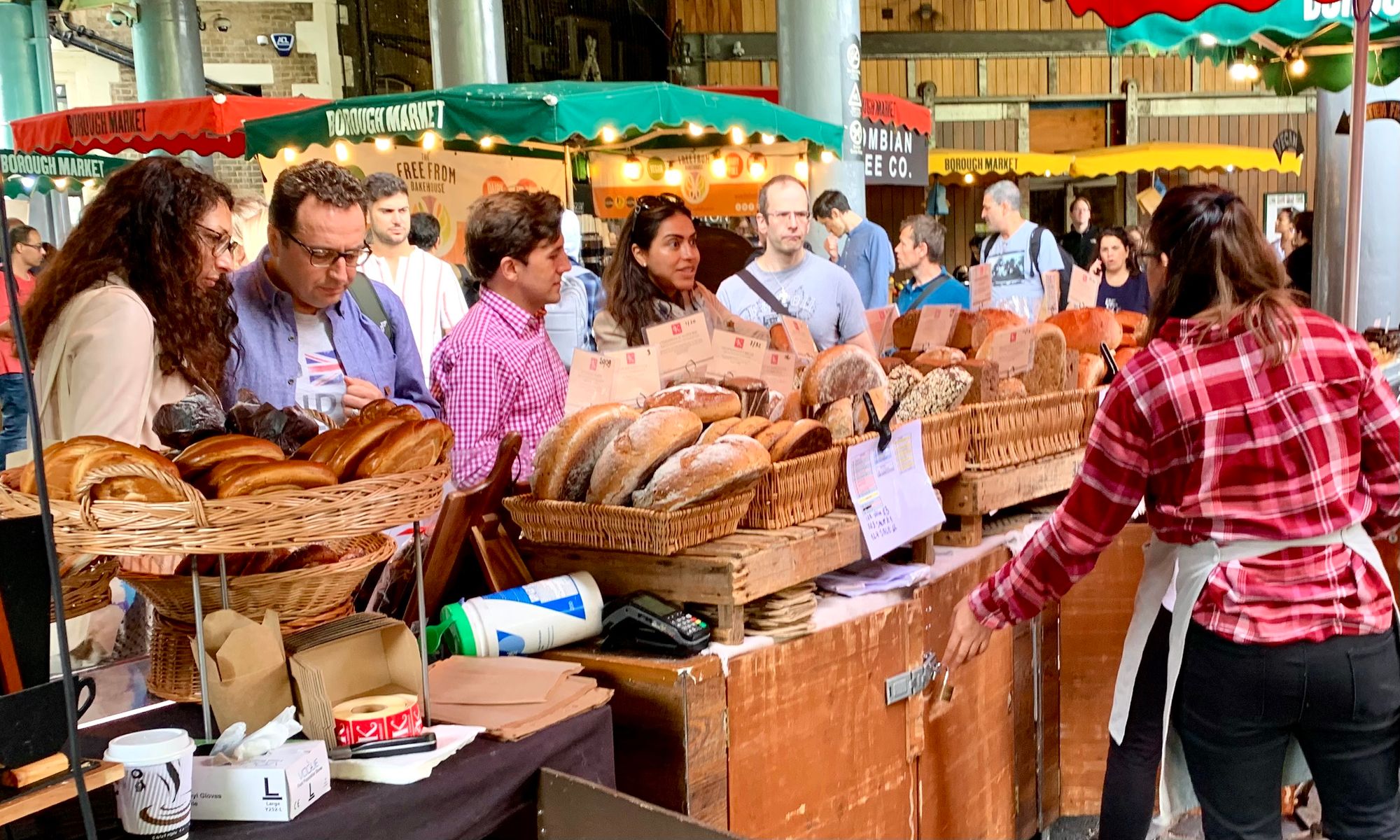
Strategy

To implement our campaigns and other placemaking initiatives, we will:
- Draw on all of the tools, resources, and experience of the leadership of the Placemaking Fund to build the capacity of local leaders to make catalytic efforts;
- Leverage the knowledge and experience of our network of Placemaking leaders, who have successfully undertaken transformative projects and programs, and can work with local partners to inspire, mentor, advise, and motivate them to implement Placemaking campaigns;
- Create a pool of local leaders and change agents to launch these approaches to Placemaking in their cities and communities, and provide ongoing support in securing funding for these local projects. A cohort of new and emerging local Placemaking leaders can also share experiences, learn from each other, and create a powerful voice for Placemaking;
- Engage funders who want to leverage the Placemaking Fund’s substantial investments in building a global Placemaking network by providing the support necessary to bring this network together, create resources, communicate approaches, and implement projects locally;
- Set up ongoing measurement systems to incorporate a data-driven approach to understanding the social, environmental, and economic impacts of Placemaking campaigns; and
- Share lessons and experience broadly and in collaboration with global organizations and movements.
Action Plan:
- Seek partners: create partnerships and collaborations with organizations with complementary missions at the state, national, and global levels;
- Launch pilot efforts: identify and work with partners to test this new approach around different contexts and agendas, including Lighter, Quicker, Cheaper activations
- Seek funding: accelerate opportunities to expand pilot efforts in collaboration with partners;
- Communicate: spread the lessons learned from projects to a broader, global audience; and
- Expand: create a multi-year strategy to broaden participation through Placemaking networks and other global organizations and movements.
Join Us! Funding and Partnerships
The Placemaking Fund is currently supporting its two inaugural programs which will be integrally involved in the Catalytic Projects and Campaign efforts. We are seeking partners to help us leverage this investment towards the development and implementation of this program. It is a program that will require significant investment which will leverage further funding to create profound positive impacts on our communities. If you would like to donate, you can do so here.
This effort can reach hundreds of millions in total infrastructure investment for design, construction, and management from both local, national, and global sources and become the model for the future of cities and communities everywhere.













